[Khmer Below]
A part of my academic studies at Liger is teaching government school’s students to play Frisbee, we introduce Frisbee to these students since the beginning of this school year. I join this project in the middle of the way, but I see the potential of them learning how to play frisbee is empowering. They influence me to play more Frisbee, and watching them train is more than just a dream. In Cambodian propaganda: Girls should only stay at home and do house chores, Yes! This is just a whole mindset of Cambodians toward these girls, they had never seen humans like those girls running, throwing, catching Frisbee, having equal rights as boys, dominating the field and play a new sport that we introduced. These girls are amazing, they are eager to succeed, we teach them, they are focusing carefully, then they apply in their real game, seeing those girls training every weekend is better than watching professional players play in their actual game.
ផ្នែកមួយនៃការសិក្សាររបស់ខ្ញុំក្នុងសាលាភាពជាអ្នកដឹកនាំឡៃហ្គឺរគឺ បង្ហាត់សិស្សនៅតាមសាលារដ្ធក្នុងខេត្តកំពង់ស្ពឺ អោយចេះលេងកីឡា ហ្វ្រីសប៊ី។ ពួកយើងបានណែនាំកីឡាមួយនេះទៅដល់ពួកគេនៅដើមឆ្នាំសិក្សារនេះ ហើយខ្ញុំចូលរួមគម្រោងនេះគឺនៅពាក់កណ្ដាលផ្លូវបាត់ទៅហើយ ប៉ុន្តែខ្ញុំបានឃើញនូវសក្ដានុពលរបស់ពួកគេរៀនលេងកីឡានេះពិតជាល្អអស្ចារ្យខ្លាំងណាស់។ ពួកគេបានធ្វើអោយខ្ញុំលេងកីឡាមួយនេះកាន់តែច្រើន ទស្សនាពួកគេហ្វឹកហាត់គឺជាក្ដីសុបិន្ដដែលក្លាយជាការពិតរបស់ខ្ញុំ។ ចាស់ៗនៅជំនាន់ដើមតែងតែគិតថា កុមារីមិនគួរធ្វើអ្វីក្រៅពីកិច្ចការផ្ទះឡើយ បាទ! មែនហើយ វាគ្រាន់តែជាផ្នក់គំនិតមួយដែលចាស់ៗនៅជំនាន់មុនមានចំពោះកុមារីតែប៉ុណ្ណោះ ពួកគាត់មិនដែលឃើញកុមារីអស់ទាំងនេះ រត់ ចាប់ កប់ ហ្រ្វីសប៊ីនោះទេ ពួកគេមានសិទ្ធិស្មើរនឹងកុមារ៉ាដែរ ពួកគេក៏មានសិទ្ធឹកាន់កាប់ទីលានហើយនាំគ្នាលេងកីឡាថ្មីដែលពួកយើងបានណែនាំទៅដល់ពួកគេផងដែរ។ ពួកគេពិតជាអស្ចារ្យមែនទេន ពួកគេមានឆន្ទះក្នុងការស្វែររកភាពជោគជ័យ នៅពេលដែលពួកយើងបង្ហាត់ពួកគេ ពួកគេយកចិត្តទុកដាក់ដោយប្រុងប្រយ័តបំផុត ហើយពួកគេក៏អនុវត្តនៅពេលដែលពួកគេលេងផងដែរ ទស្សនាពួកគេហ្វឹកហាត់រាល់ចុងសប្ដាហ៌គឺប្រសើរជាងការទស្សនាកីឡាករអាជីពប្រកួតទៅទៀត។
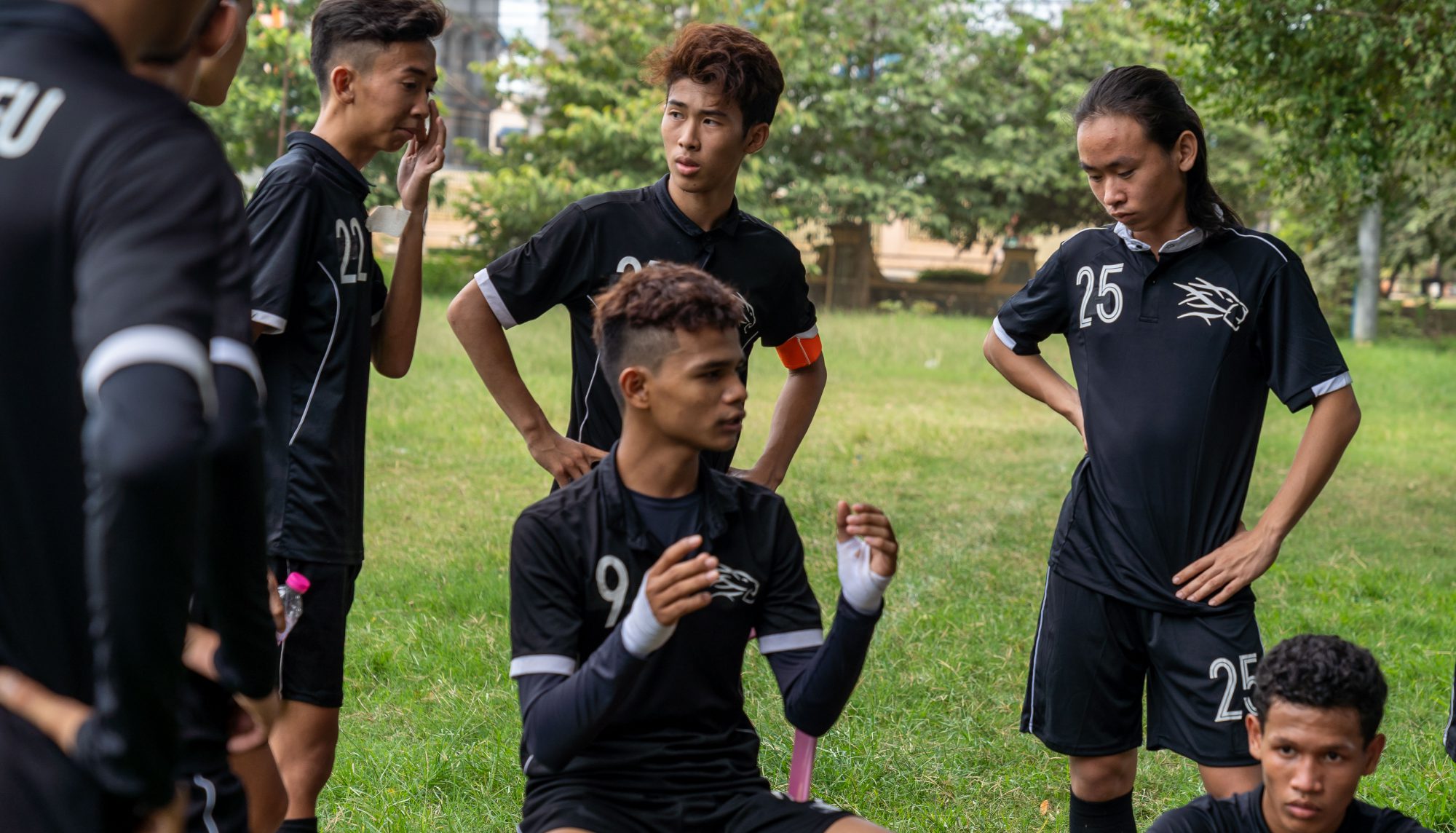
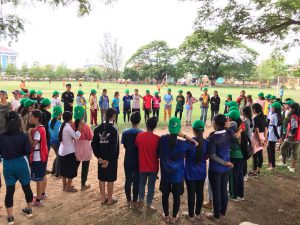

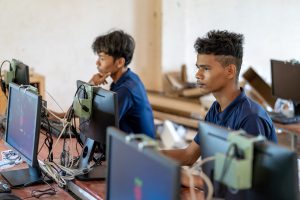
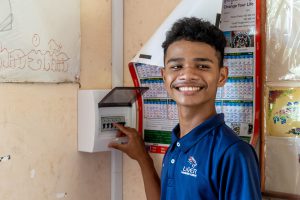
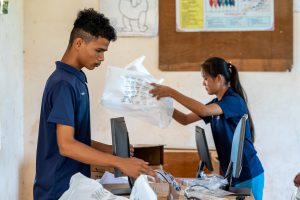
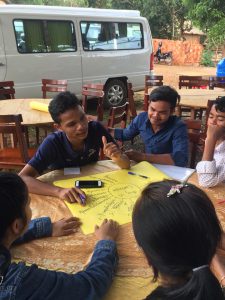

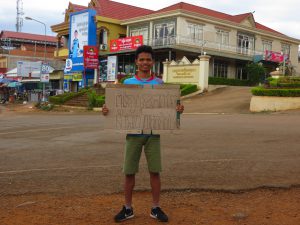

 This amazing seven weeks project has changed my life. I learned how to write a magazine and how to become a better writer. In this project I studied about the pesticides that sprayed in Liger, the power of the pesticides on insects. We went to Snoul to learn about the organisms in the organic farm. I learned about an organic farm who doesn’t use pesticides to repel the pests out of the farm in fact they created their organic pesticides to repel the pests off their products. I been to CEDAC (an organization that is working with the villagers about producing the organic products). CEDAC is working with 18 provinces including our capital city on organic products and finding the market for the organic farmers in the provinces. I wrote an article “The Ultimate Battle between Liger vs Pests”. In this article I wrote about the problems here that we had with pests as our main issue. I also include Liger as the subject in this article because many things were take place in Liger. At the end of the this project we had a Magazine as our final product.
This amazing seven weeks project has changed my life. I learned how to write a magazine and how to become a better writer. In this project I studied about the pesticides that sprayed in Liger, the power of the pesticides on insects. We went to Snoul to learn about the organisms in the organic farm. I learned about an organic farm who doesn’t use pesticides to repel the pests out of the farm in fact they created their organic pesticides to repel the pests off their products. I been to CEDAC (an organization that is working with the villagers about producing the organic products). CEDAC is working with 18 provinces including our capital city on organic products and finding the market for the organic farmers in the provinces. I wrote an article “The Ultimate Battle between Liger vs Pests”. In this article I wrote about the problems here that we had with pests as our main issue. I also include Liger as the subject in this article because many things were take place in Liger. At the end of the this project we had a Magazine as our final product.